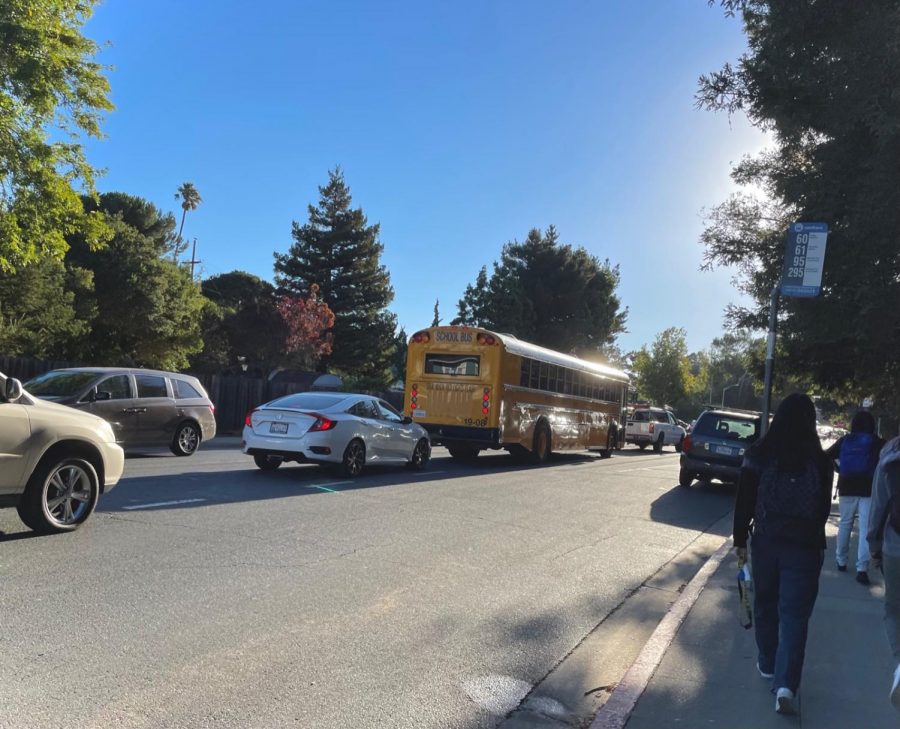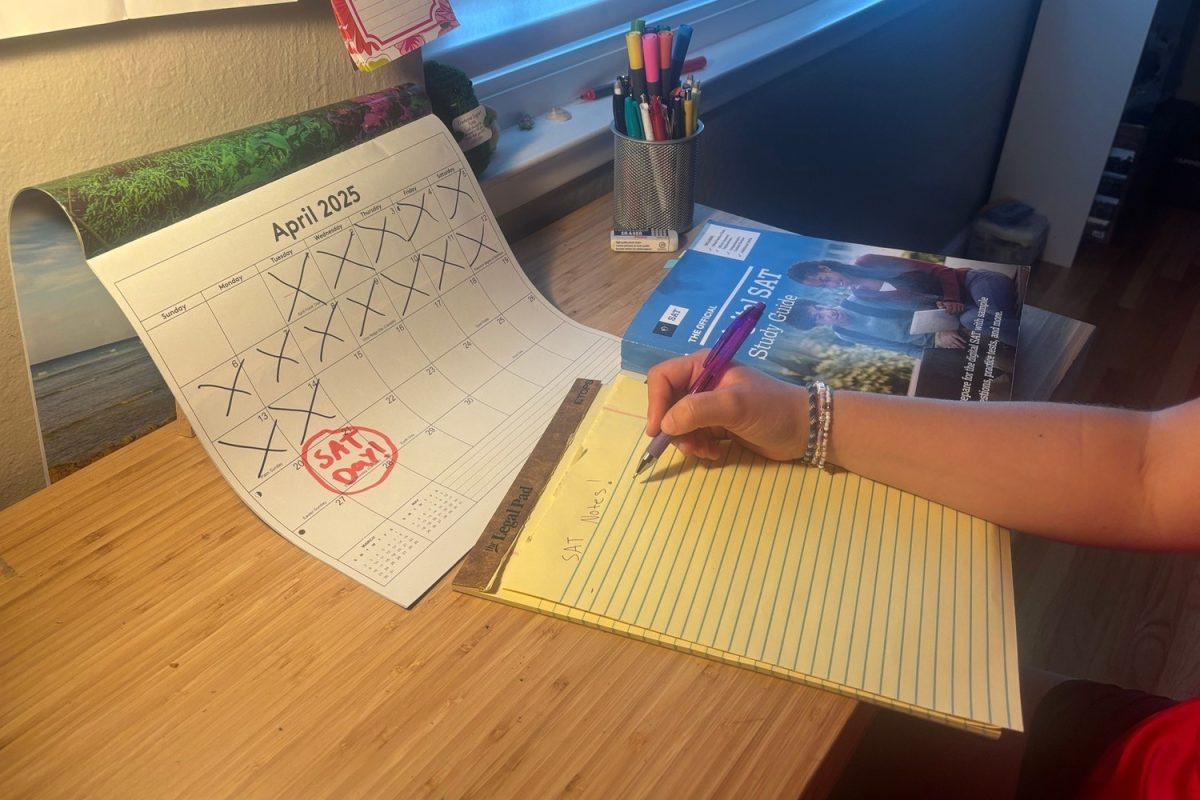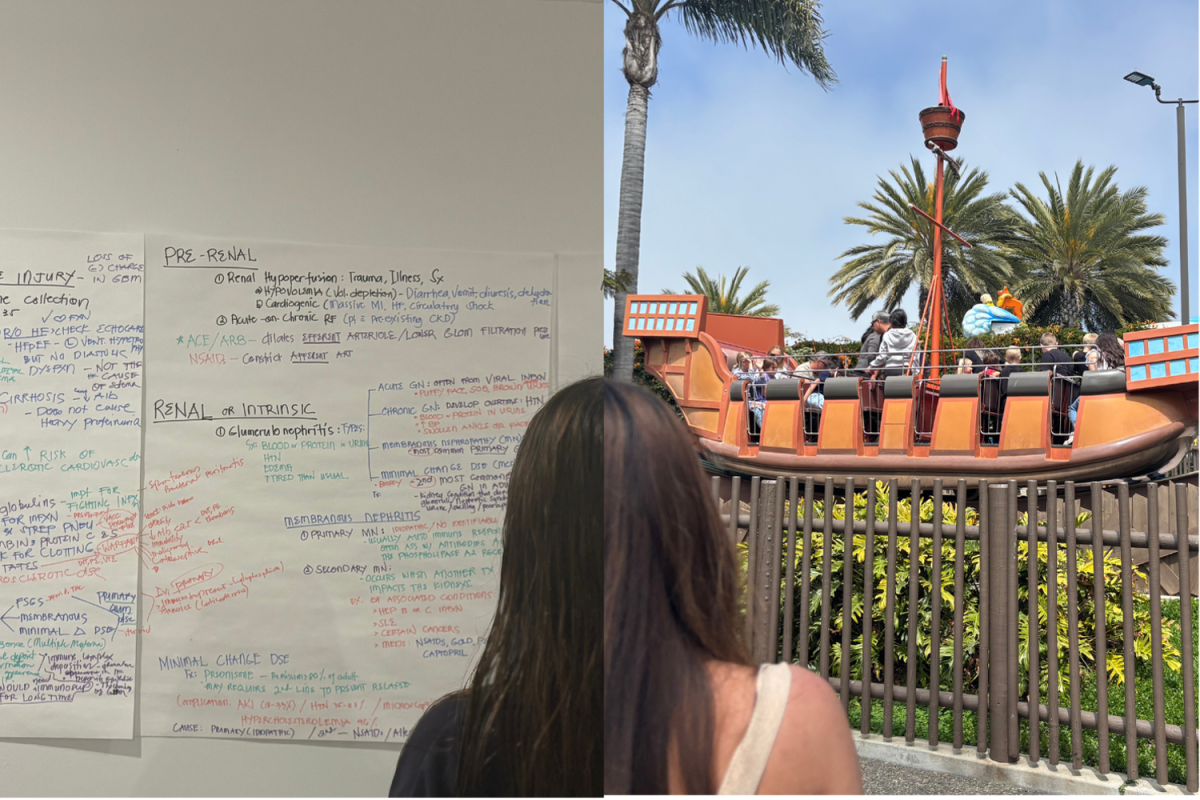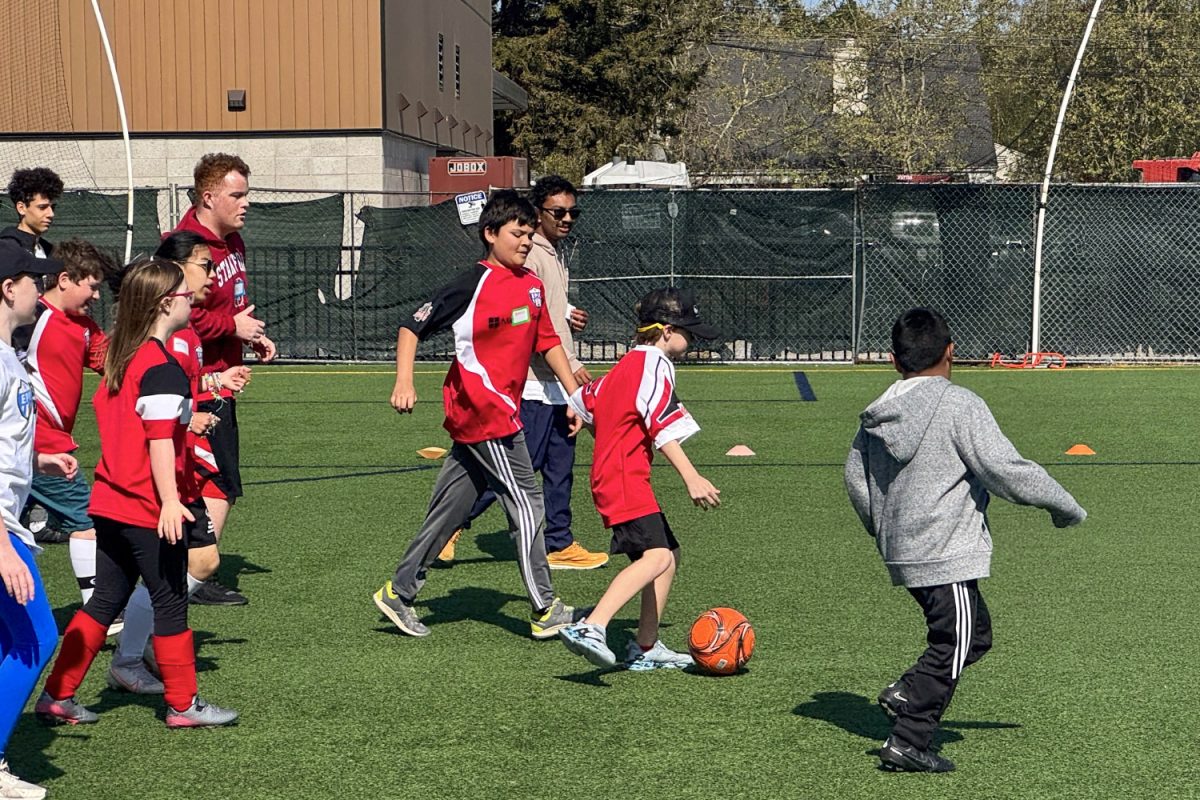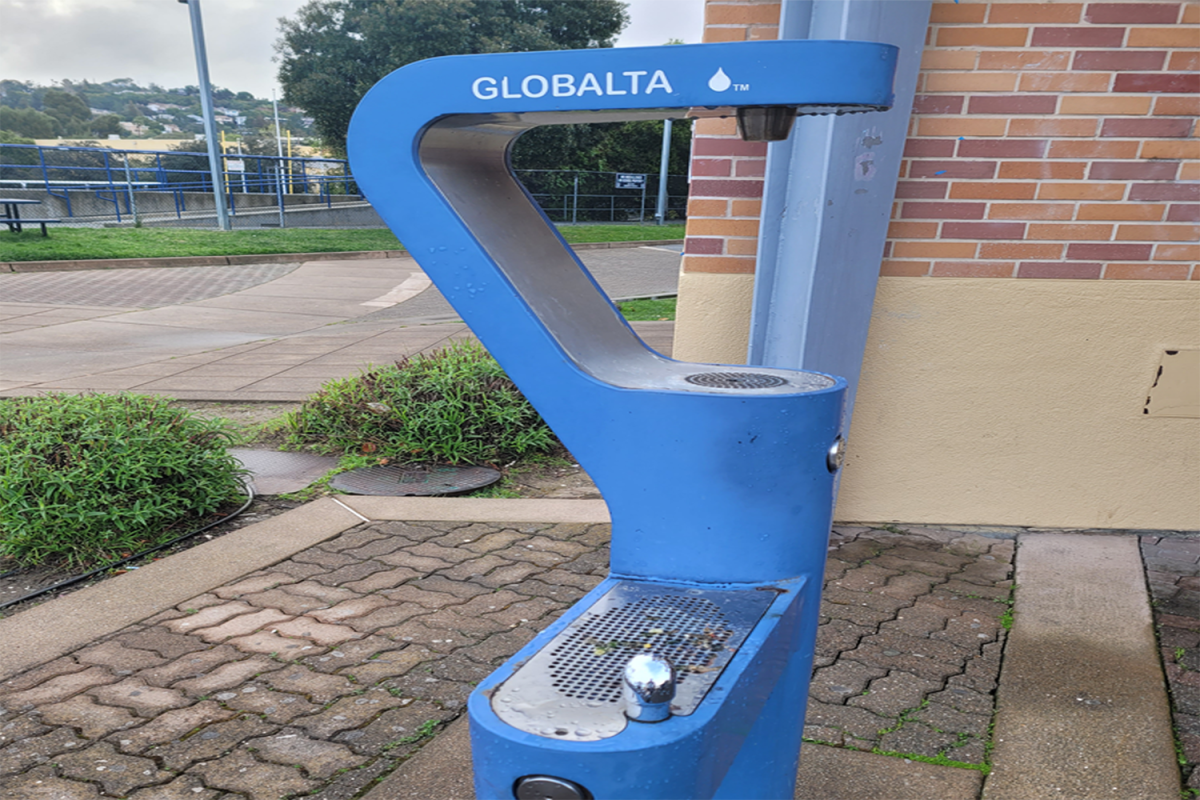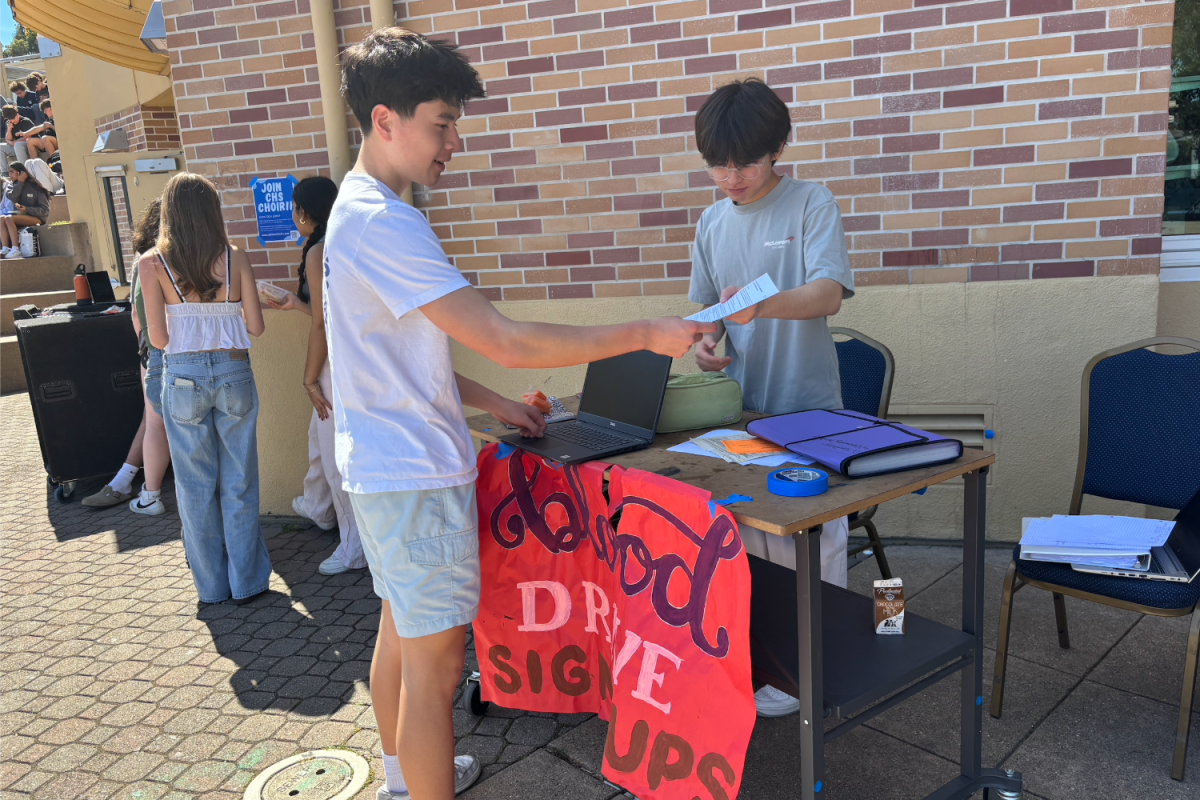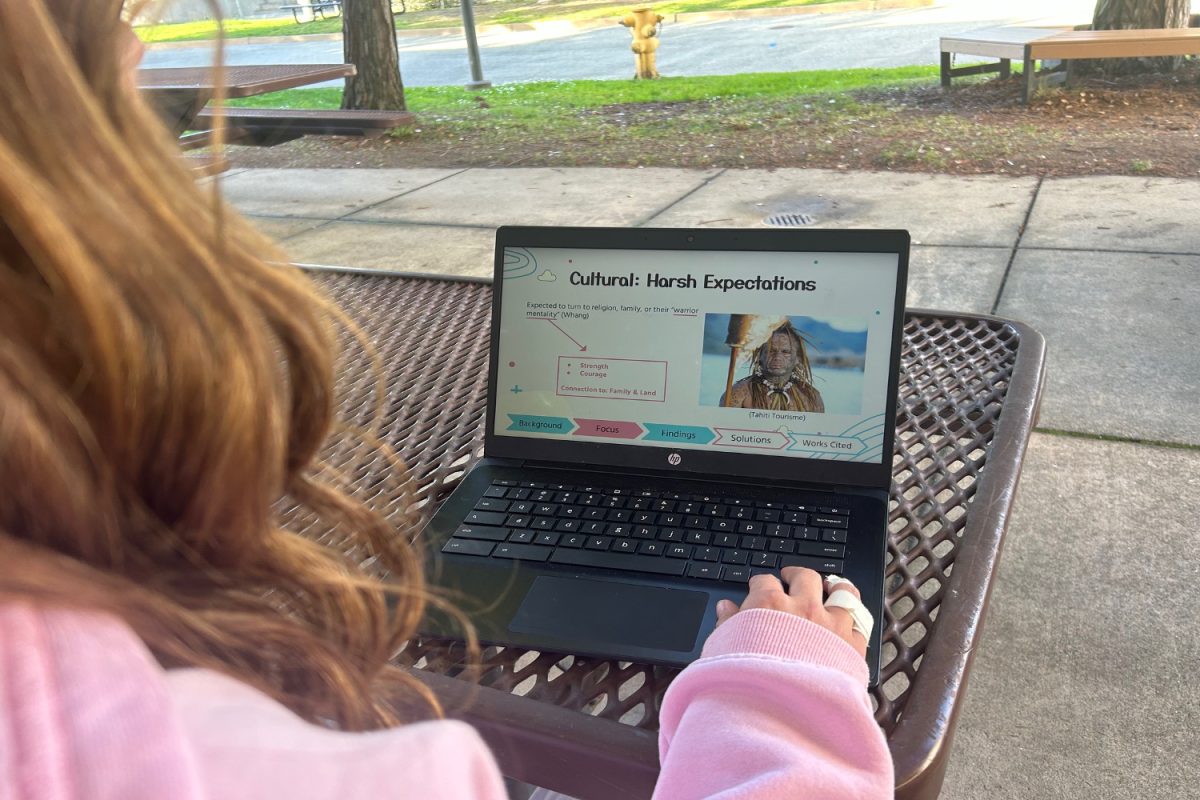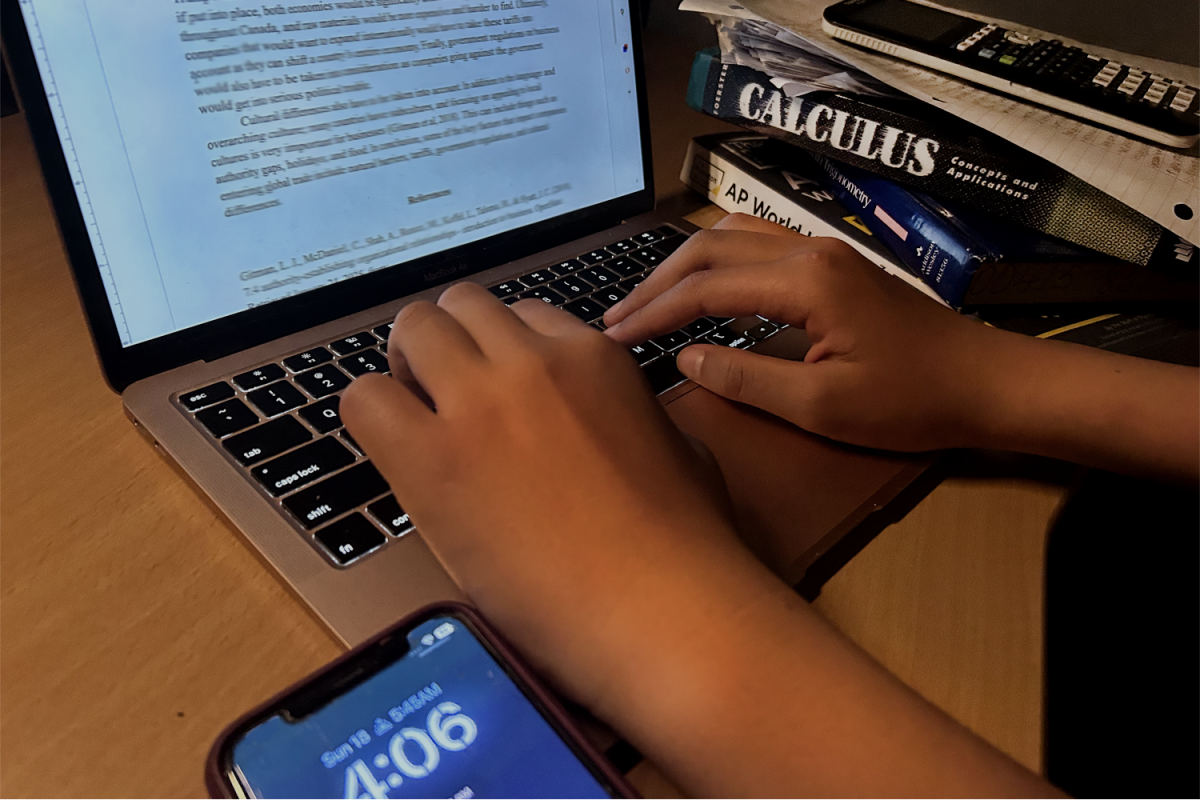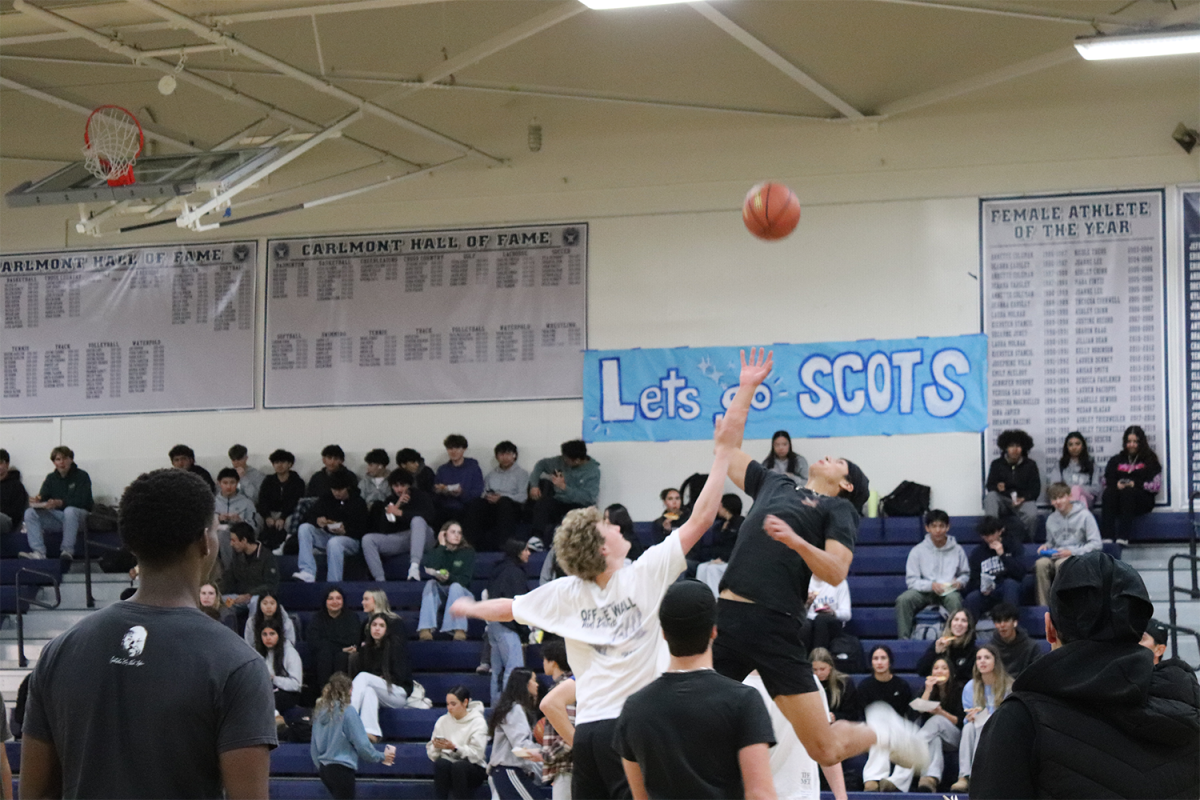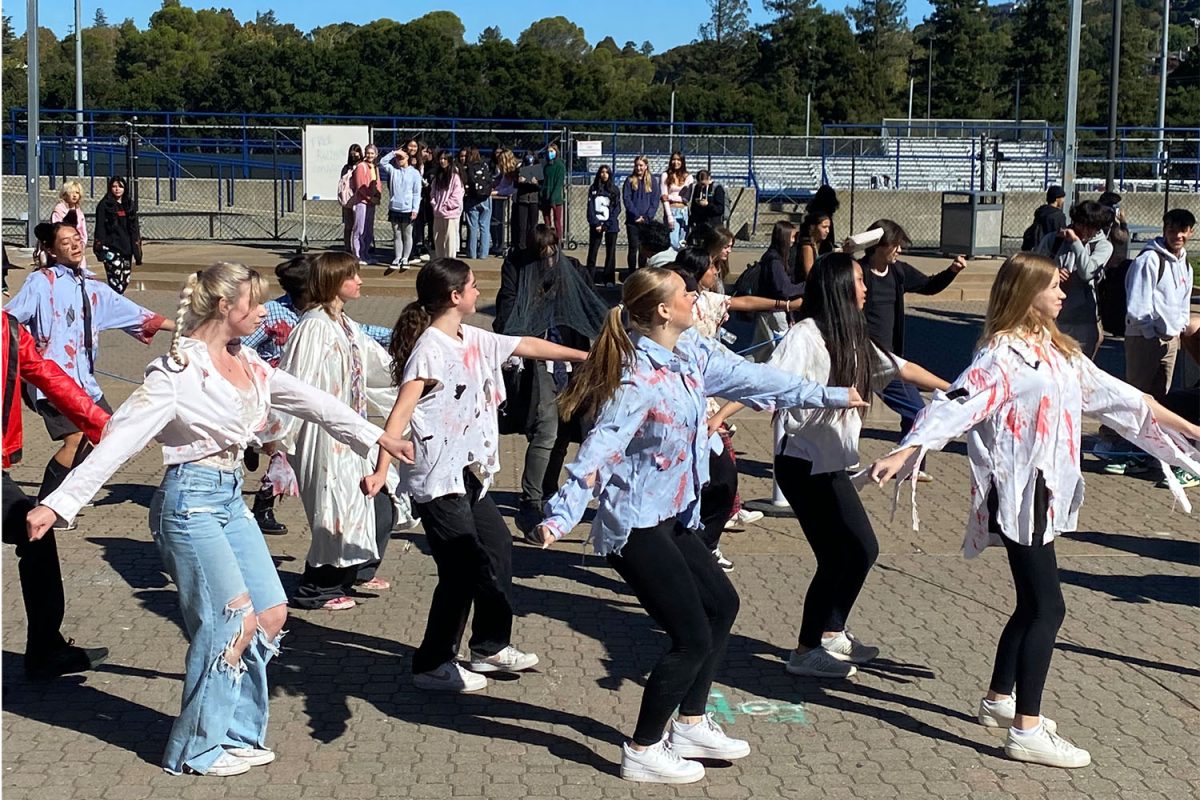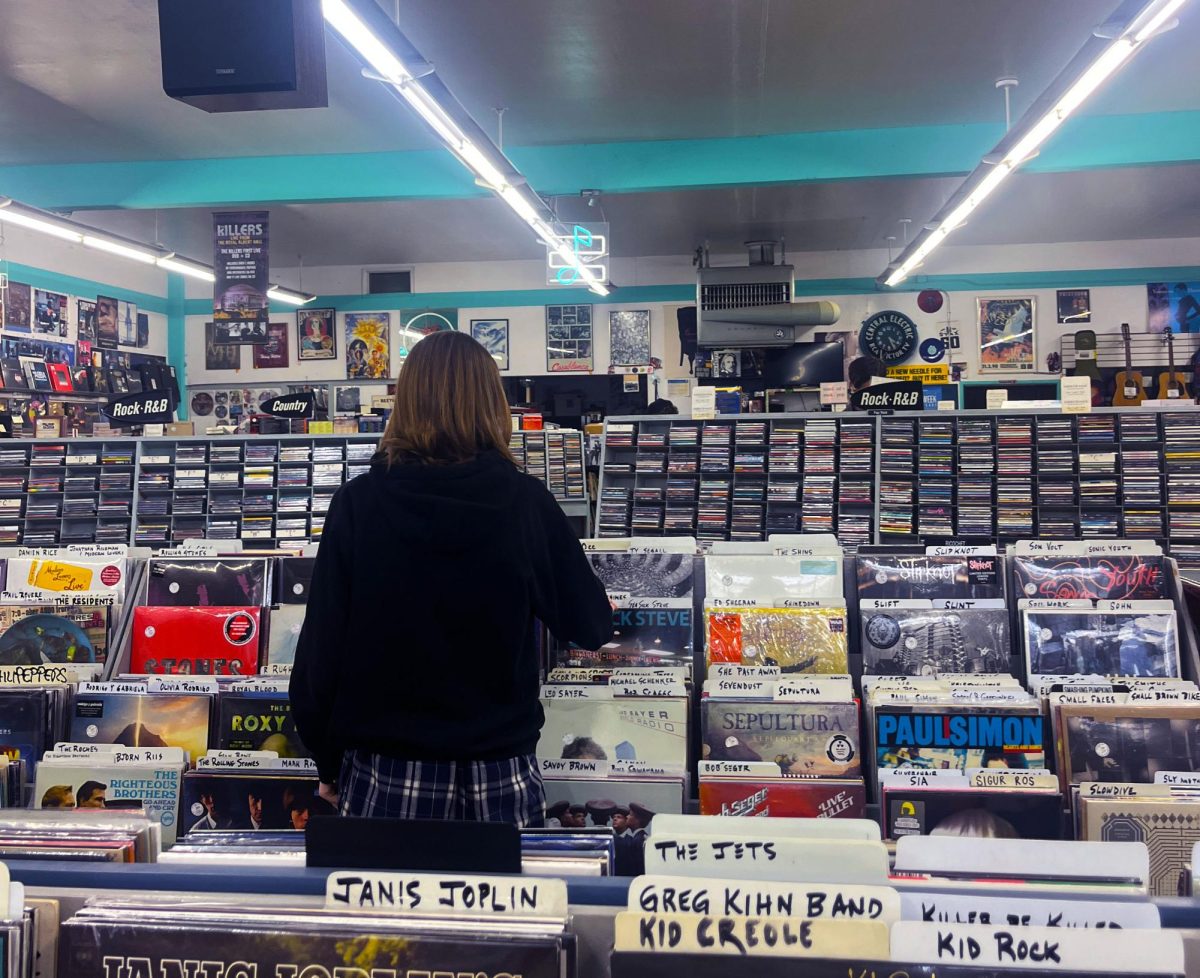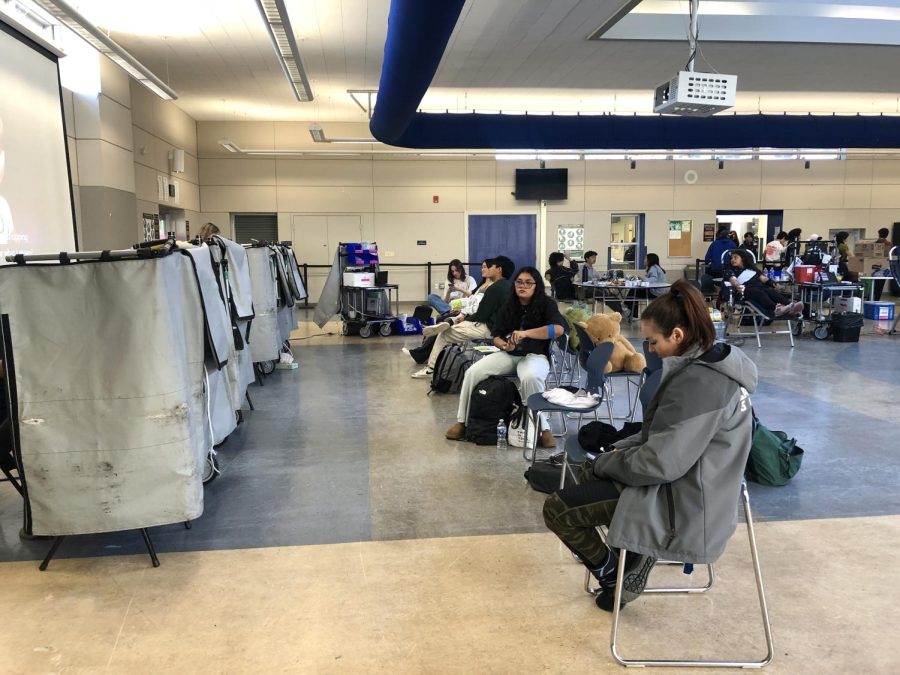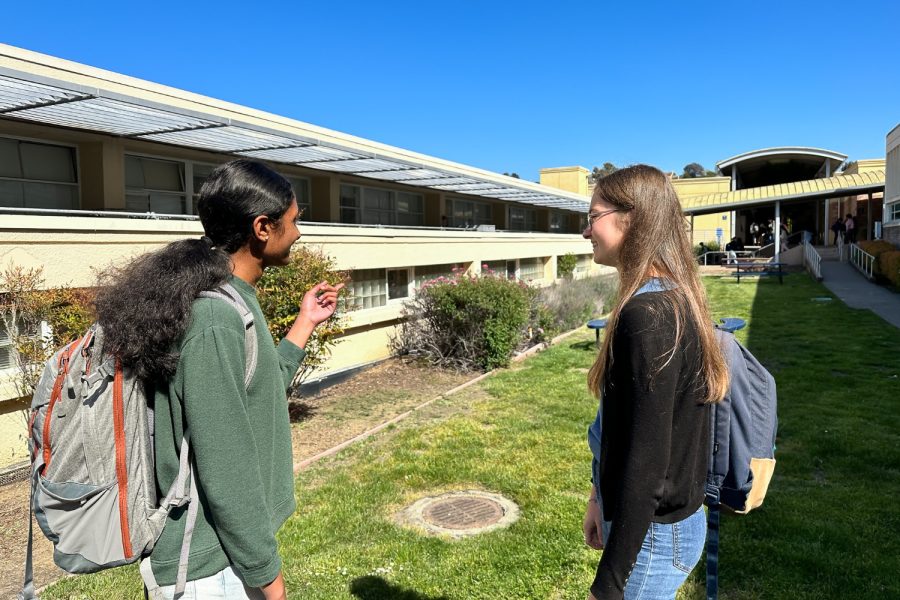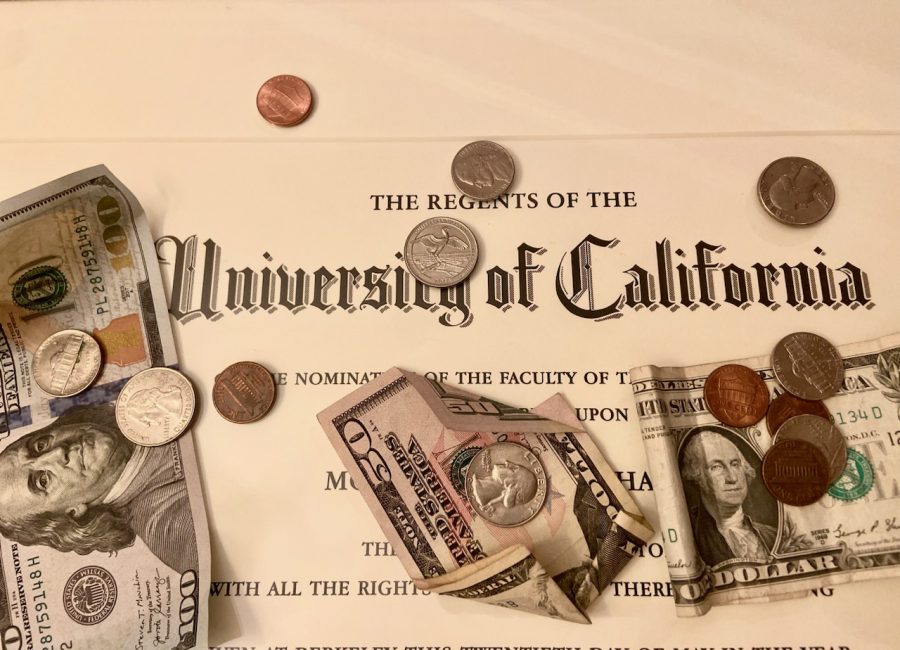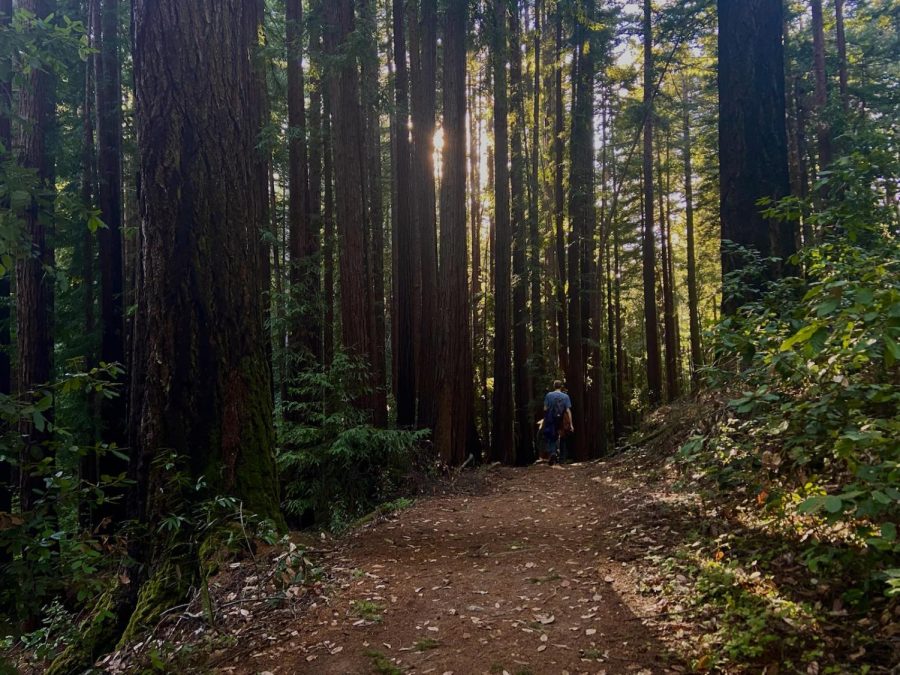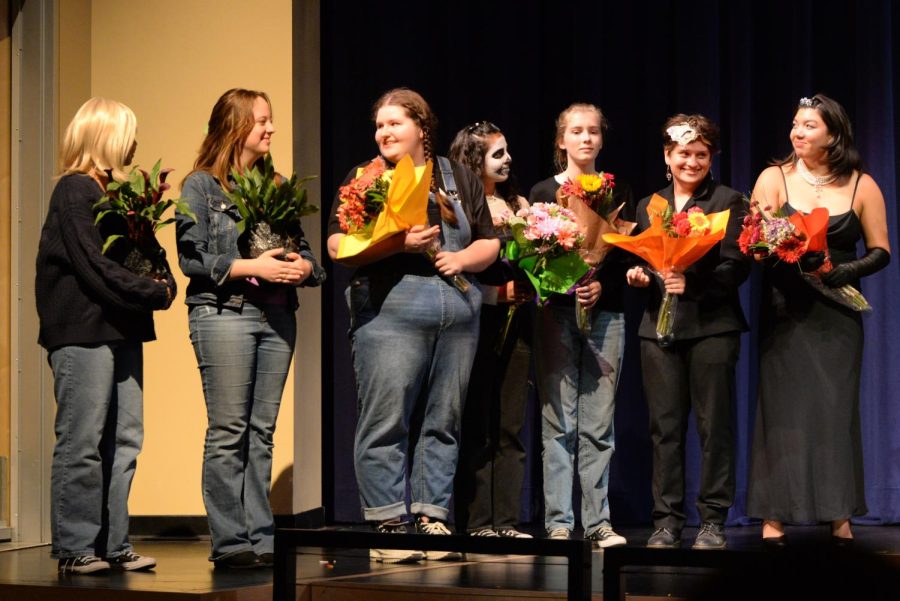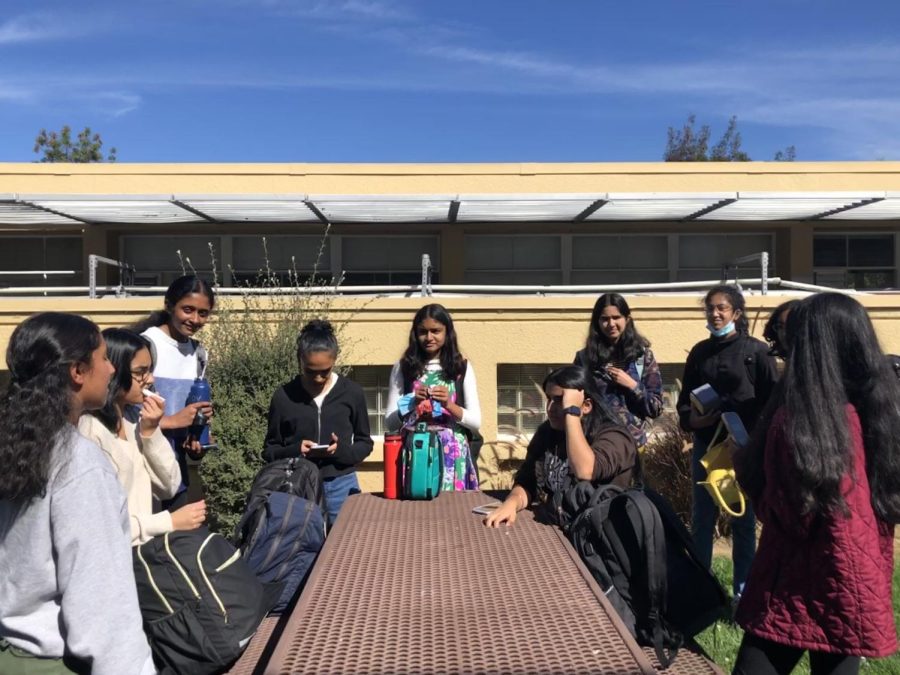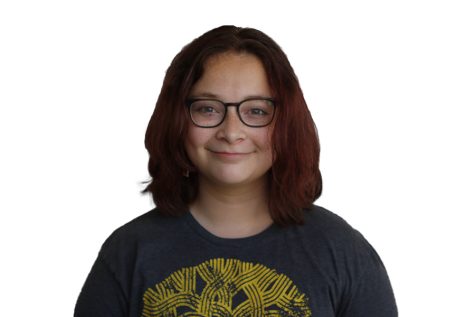When students hear the final bell, many rush to their cars to go home, only to find a sea of traffic awaiting them. That is the reality for many Carlmont students as the congestion from the number of cars and pedestrians blocks them from getting home.
Carlmont currently has two student parking lots, one for seniors and one for juniors. Both lots are typically packed during the school day. With two parking lots worth of students all trying to leave school simultaneously, many students have two options: rush to your car to leave before the crowds form, or wait it out and get home later.
“Sometimes [I try to leave], but sometimes I wait because it gets really crowded,” said senior Josie Wescott. “It takes like 30 or 40 minutes to get out.”
One contributing factor to the congestion is the series of walkways within the parking lots, which results in a continuous line of students walking out of school as drivers are trying to leave. Reed Bowman, a junior, noted that the pedestrian delays extend the waiting time.
“The first week of school, I parked in the junior lot, and immediately after school, I left and was struck by hundreds of oncoming teenagers that blocked the exit to the parking lot. I sat there for about 25 to 30 minutes in my car, waiting for the entire school to pass before I could exit,” Bowman said.
Another major cause for traffic in the area comes from neighboring schools with similar start and end times, like Tierra Linda Middle School (TL). That can be an issue for Carlmont students who find an alternative location to park.
“I park right next to TL, and a lot of times, I find myself not being able to find parking on that side street because TL starts at the same time that I park there,” said junior Rachel Erlikhman.
Besides these delays, hesitancy to use public transportation because of the COVID-19 pandemic has slowed the flow of traffic. Charlotte Lopez, a junior, commented on the trend, saying that they carpool now instead of taking the bus.
“I don’t go on the bus now mainly because I think I’m still kind of paranoid about COVID-19. I just don’t want to be around that many people on a bus,” Lopez said.
In order to find a solution to help alleviate the traffic issues, a study by the California Traffic Engineering Consultants titled Four Corners came up with a plan that proposed altering the exit to the junior parking lot. It also involved creating mini-roundabouts by the major intersections leading into the school, so drivers don’t have to turn left as they exit onto Alameda de las Pulgas.
Although this study was published over five years ago, there haven’t been many efforts, in terms of physical construction, to turn this plan into reality. However, according to Belmont’s Public Works Director Peter Brown, the plans are still being put in motion.
“[Belmont] secured funding, in partnership with San Carlos, to fund the designs for the corridor. We’re hoping to, in 2022, complete the design of the Alameda corridor improvements, so that’s a pretty big achievement,” Brown said. “The next thing we would need to do is go after some grant funding to fund the construction improvements because we don’t currently have any funds to build the project; we just have funds to design the solutions.”
Brown added that reconstruction to the corridor is a lengthy process to complete.
“I think it’s probably a three to 10-year time frame. Three years would be incredibly quick, and 10 years is more realistic in terms of when the improvements are actually on the ground,” Brown said.
For more short-term solutions, Brown provided other ideas to reduce traffic near Carlmont.
“If students come at different times, then we call that spreading out the peak. For example, traffic that isn’t as bad over a two-hour period is going to be really bad for a half-hour period,” Brown said. “I know there are some programs to get students to take an eBike to school. [Also], I think carpooling is another thing that I would encourage the school and the school district to do.”
Ultimately, Brown explained that everybody plays a part in school traffic, and with all of these efforts described, people can largely resolve traffic congestion issues.
“We need all of the solutions,” Brown said. “I think if all of those things happen, then we may see some improvements, but if everybody keeps doing what they’re doing, I think things are going to stay the same.”

